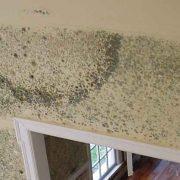The 5-step mold remediation process used by professionals
Mold finds its way into people’s homes by blowing in through the AC, windows and doors, or by attaching to pets, clothes or other items. Once in the house, mold spores seek out moist areas, where they form their colonies. It’s therefore important to remove all sources of moisture before any remediation (cleaning) efforts can begin, as not doing so will cause the mold to colonize the area again.
Mold remediation should be done in the following five steps to prevent this nagging problem from coming back:
- Identifying the source of moisture that is feeding the mold.
The source of a water leak might not be obvious so it’s important for the remediation company to conduct a thorough inspection of the whole house to find the source of moisture leakage.
- Documenting, through photographs, videos and writing, the details of the infestation.
Detailed documentation will help the remediation team come up with a plan. The plan can include details like: the timeline for the cleanup, resources needed for remediation and whether you will need to move out during the cleanup. Proper documentation will also serve as a reference point in case of future problems.
- Assessing the extent of the contamination.
This is important because mold can spread beyond areas that are visible on a day-to-day basis. Knowing the extent of the spread, will aid in crafting an approach for cleanup, without missing any part.
- The cleanup (remediation).
Before beginning, the area with the mold infestation has to be isolated by sealing with plastic sheeting and duct tape. This is done to protect you, your family and the rest of the house from mold contamination. Once the area is completely sealed off,
- The source of moisture leakage is repaired to prevent growth of new spores.
- Dust in the contaminated areas is suppressed by misting. This will prevent any spores or dust particles from escaping during cleanup.
- Wet or moldy material is bagged and taken outside.
- All non-porous items and surfaces are cleaned using a wire brush then wiped down with disinfectant wipes. The process is repeated with detergent solution until all mold is eliminated, then the surfaces are dried with cloth. Depending on the level of mold contamination, a vacuum cleaner can also be used, followed by a thorough wipe down with a damp cloth and detergent solution.
- The room is then dried thoroughly and all materials that were removed are replaced.
- Verification process to assess whether the cleanup was successful.
The following are signs of a mold-free room:
- Absence of dust, dirt, mold or a moldy smell.
- A completely dry room, without any signs of wetness.
- There should be no furniture or surfaces in the room with mold on them.
- No one in the house should complain or suffer from physical symptoms related to mold inhalation.
Mold remediation should only be performed by professionals, who have the right equipment, disinfectants, protective clothing and knowledge of how to fight mold.






